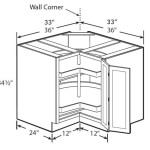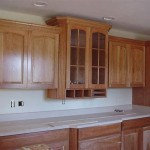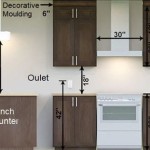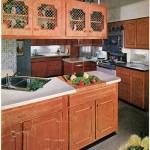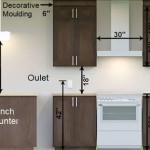Part 2: Essential Aspects of Building Your Own Kitchen Cabinets
Building your own kitchen cabinets can be a rewarding project, but it also requires careful planning and execution. In this second part of our guide, we will cover essential aspects of cabinet construction that will help ensure your project is a success.
Materials and Hardware
Choosing the right materials is crucial for the durability and aesthetics of your cabinets. Solid wood, such as oak or maple, is a popular and durable option, but it can be expensive. Plywood and MDF (medium-density fiberboard) are more affordable alternatives that offer good strength and stability.
For hardware, you will need hinges, drawer slides, and handles or knobs. Choose high-quality hardware that will withstand daily use and enhance the functionality of your cabinets.
Cabinet Construction
Cabinets are typically made up of three main components: the frame, the doors, and the drawers. The frame provides the structure of the cabinet, while the doors and drawers allow access to the interior.
To construct the frame, you will need to cut and assemble the side panels, top and bottom, and back panel. Use wood screws or pocket hole joinery to secure the components. For doors and drawers, you will need to cut and fit the panels and attach them to the frame using hinges or drawer slides.
Finishing
Once the cabinets are constructed, it is time to apply a finish that will protect the wood and give them a desired look. You can choose from various finishes, including paint, stain, or clear sealant.
If you opt for paint, make sure to use a primer first to ensure the paint adheres properly. For stain, you will need to sand the wood to prepare it for application. Clear sealants allow the natural wood grain to show through while still providing protection.
Installation
Installing kitchen cabinets requires careful planning and attention to detail. You will need to level the cabinets and secure them to the walls or floor. Ensure that the doors and drawers open and close smoothly without binding.
Use shims or spacer blocks to adjust the cabinets' position and achieve a flush, professional-looking installation.
Tips for Success
Here are a few tips to help you build successful kitchen cabinets:
- Plan carefully and measure accurately to avoid mistakes.
- Use high-quality materials and hardware for durability.
- Take your time and be patient during the construction process.
- Seek professional assistance if needed, especially for complex or large-scale projects.
Building your own kitchen cabinets can be a challenging but rewarding experience. By following these essential aspects, you can create beautiful, functional, and durable cabinets that will enhance your kitchen for years to come.

How To Build Your Own Kitchen Cabinets Part 2
Diy Built In Cabinets For The Kitchen Angela Marie Made

Diy Built In Cabinets For The Kitchen Angela Marie Made

Diy Base Cabinet Build For Food Pantry Part 2

Diy Base Cabinet Build For Food Pantry Part 2

Diy Shaker Style Cabinets Part 2 Jenny Komenda

Diy Built In Cabinets For The Kitchen Angela Marie Made

Build Cabinets The Easy Way Building And Installing Drawers

Diy Built In Cabinets For The Kitchen Angela Marie Made

Al Kitchen Cabinet Makeover Part 2
Related Posts

